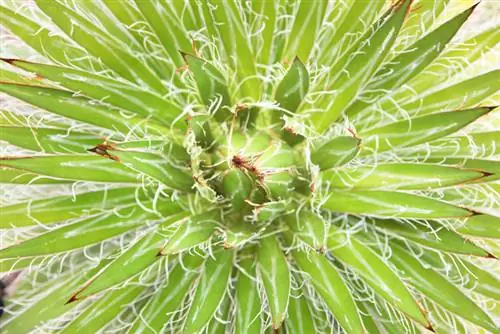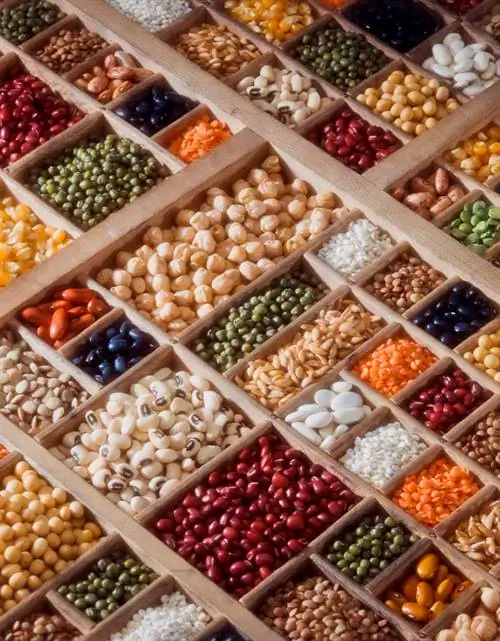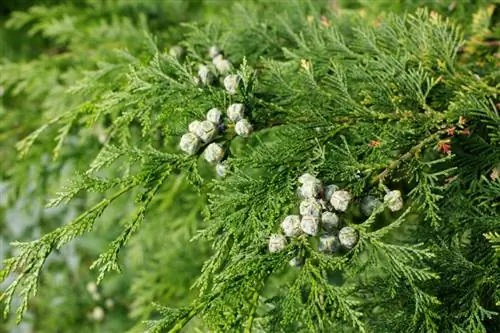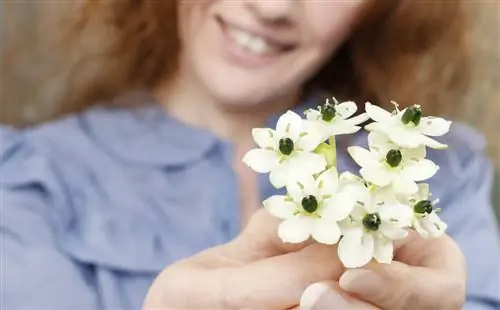- Author admin [email protected].
- Public 2023-12-16 16:46.
- Last modified 2025-01-23 11:21.
Every year a blooming Yucca filamentosa or filamentous palm lily delights its owner. This hardy and stemless Yucca species is preferably cultivated in gardens and impresses with its flower shoots, which are up to two meters long and covered in numerous white flowers. Opinions vary even among experts as to whether the plant is poisonous or not.
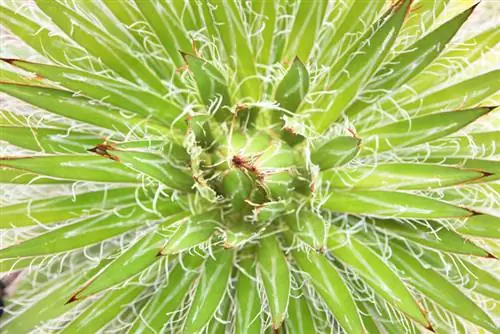
Is Yucca filamentosa poisonous?
The toxicity of Yucca filamentosa is controversial because its ingredients have not yet been examined in detail. Some people and pets show symptoms of poisoning after consumption, while others have no problems. To protect children and pets, consider the plant poisonous.
Yucca filamentosa: caution is advised
This is because the ingredients of the plant have not yet been subjected to precise examination and there are also completely different reports circulating. Some people - especially children - and many pets complain of symptoms of poisoning such as vomiting, diarrhea and irritation of the mucous membrane after eating yucca parts - but others have no problems. The fact is that the yucca contains saponins, which are generally unproblematic, but can lead to the decomposition of red blood cells in the bloodstream. For this reason, families with children and pet owners are better off assuming that the plant is poisonous.
Tip
Whether poisonous or not, the sharp leaves of Yucca filamentosa are particularly dangerous. You can cut yourself very easily on these.

